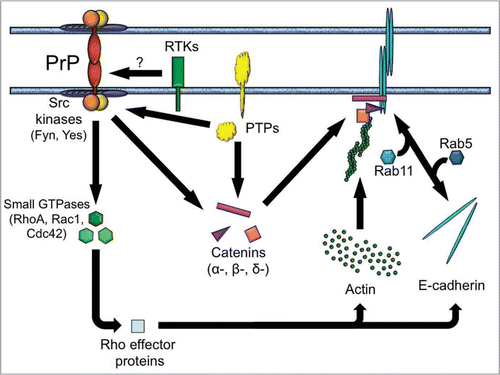Figures & data
Figure 1 A proposed role of PrP in cell-cell communication. Homophilic trans-interactions between PrP molecules elicit contact formation and signal transduction by Src-related tyrosine kinases, leading to the correct assembly and positioning of E-cadherin adhesion complexes, as well as to remodeling of the actin cytoskeleton via small GTPases. These processes may be further modulated by additional molecules, including catenins (α-, β- and δ-catenin), protein tyrosine phosphatases (PTPs) and external cues via receptor tyrosine kinases (RTKs). Although the model assumes that PrP itself is capable of eliciting a signal across the plasma membrane, it does not exclude the possibility that PrP may also signal through a cis-interacting partner. Arrows do not imply unidirectionality.
